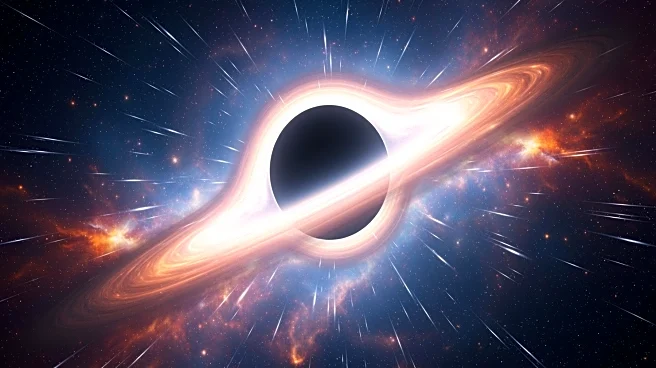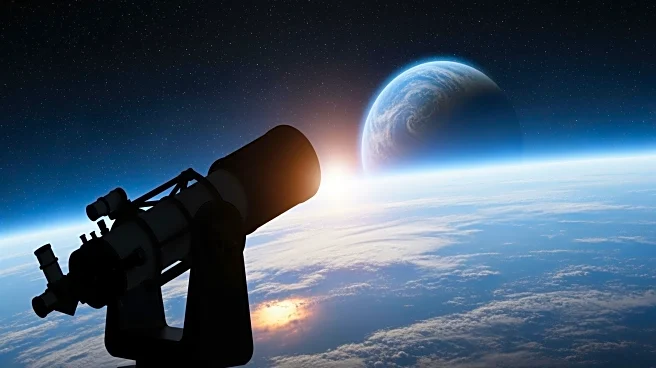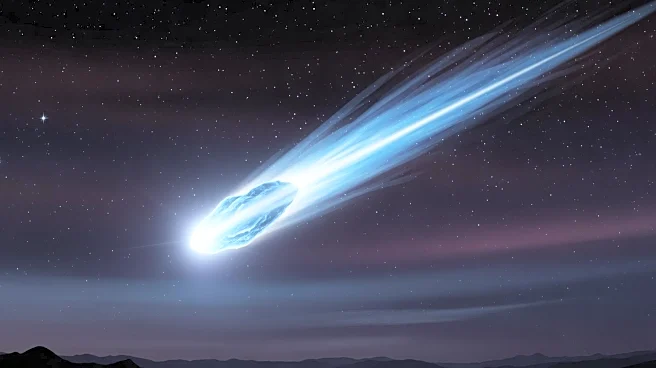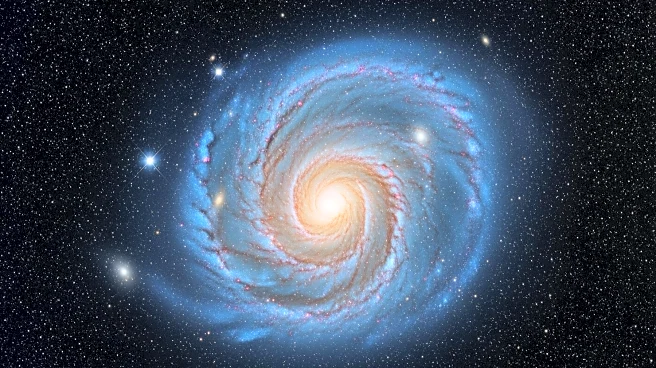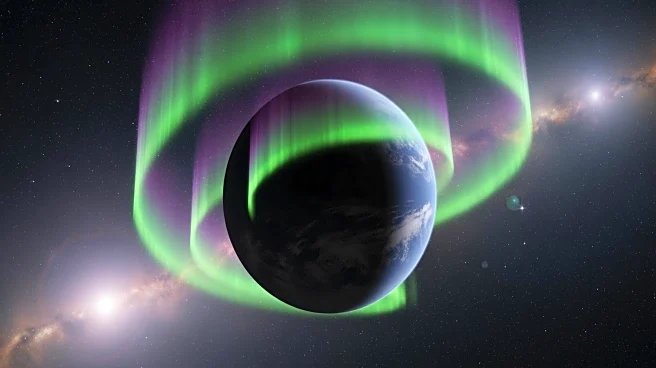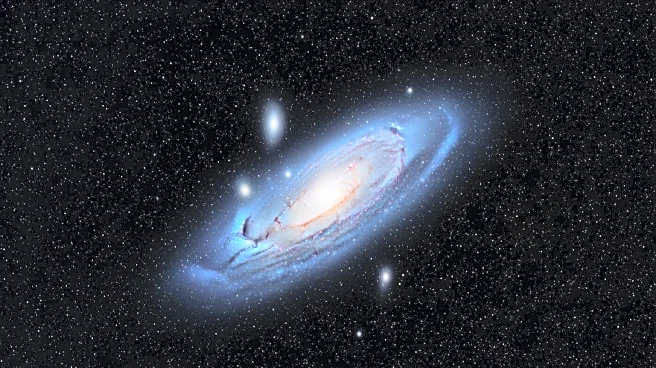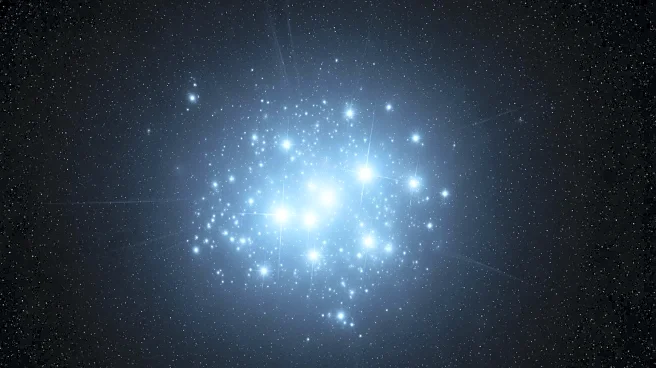What's Happening?
The Vera C. Rubin Observatory in Chile has captured its first image, revealing a vast stellar stream emanating from the nearby galaxy M61. This barred spiral galaxy, located 55 million light-years away
in the constellation Virgo, has been studied for decades. However, the observatory's unique sensitivity to low surface brightness objects has uncovered a previously unseen stream of stars. The stream stretches approximately 50 kiloparsecs, comparable to the diameter of the Milky Way, and is thought to be the remnants of a dwarf galaxy torn apart by M61's gravity. This discovery may have triggered a starburst in M61, significantly increasing new star formation.
Why It's Important?
The discovery of the stellar stream around M61 provides valuable insights into galaxy formation and evolution. It suggests that large galaxies may grow by consuming smaller ones, a process that could lead to new star formation and structural changes within the galaxy. The stream's resemblance to the Sagittarius Stream around the Milky Way highlights the potential for similar processes occurring in other galaxies. The Vera Rubin Observatory's ability to detect such faint structures promises to unveil more substructures around other galaxies, enhancing our understanding of cosmic dynamics and the lifecycle of galaxies.
What's Next?
The Vera Rubin Observatory is set to embark on its 10-year Legacy Survey of Space and Time mission, creating a high-definition time-lapse record of the universe. This mission will likely reveal more hidden structures and substructures around galaxies, providing a deeper understanding of their formation and evolution. The observatory's findings could lead to new theories about galaxy interactions and the role of stellar streams in shaping galactic environments.
Beyond the Headlines
The discovery of the stellar stream around M61 underscores the importance of advanced observational technology in uncovering cosmic phenomena. The Vera Rubin Observatory's capabilities represent a significant advancement in astronomy, allowing scientists to explore the universe's hidden structures and dynamics. This research could lead to a reevaluation of galaxy formation theories and contribute to our understanding of the universe's complexity.



